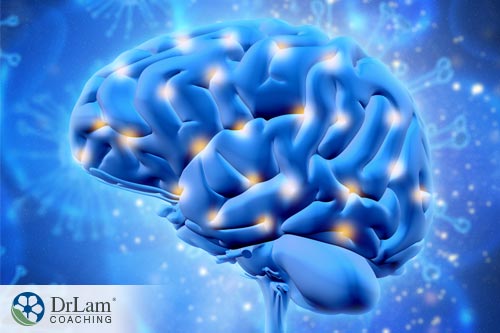 The symptoms of a metabolic inner ear disorder are harbingers of other metabolic disorders, such as those related to carbohydrate metabolism, malabsorption of sugar in the intestines, hyperinsulinemia, and diabetes. Auditory symptoms, as well as symptoms of the inner ear vestibule, are usually early warning signs of these metabolic issues.
The symptoms of a metabolic inner ear disorder are harbingers of other metabolic disorders, such as those related to carbohydrate metabolism, malabsorption of sugar in the intestines, hyperinsulinemia, and diabetes. Auditory symptoms, as well as symptoms of the inner ear vestibule, are usually early warning signs of these metabolic issues.
The inner ear is a very complex structure inside the skull, and it’s sometimes called the labyrinth of the ear. It’s the part of the ear that contains several parts that are responsible for your hearing and equilibrium.
The bony labyrinth is a cavity in the temporal bone, and it has three sections: the vestibule, the cochlea, and the semicircular canals. Inside the bony labyrinth is a membranous labyrinth filled with endolymph, a potassium-rich fluid. The membranous labyrinth is divided into the saccule and utricle, which are in the vestibule, the semicircular ducts, and the cochlear duct. Between the membranous labyrinth and the bony labyrinth is a sodium-rich fluid called the perilymph.
The vestibule, the semicircular canals, and the saccule and utricle are responsible for your sense of steadiness and balance. They contain organs filled with hair cells that are covered by otoliths, gelatinous membranes that contain calcium carbonate particles. When you move your head, these otoliths pull on the hair cells, which stimulates the vestibular nerve, which in turn measures where your head is in relation to the rest of your body.
In the semicircular canals, which are positioned at right angles to each other, you have the semicircular ducts, and each duct ends in an ampulla where the crista, or ampullary ridge containing hair cells, resides. As you move your head, the movement of the endolymph fluid stimulates these cells, which also signals the position of your head through your vestibular nerve.
As you can see, the inner ear is like a miracle of engineering. But there’s more. With regards to hearing, the cochlea is the part of the inner ear that is responsible for all auditory sensation. Inside the cochlea, the cochlear duct and the bony labyrinth coil into a spiral shape, similar to that of a snail’s shell. Along the base of the cochlear duct is the basilar membrane, where sensory cells and supporting cells form the organ of Corti.
As sound waves come across the middle ear’s bones, they make the oval window, which is the membranous opening between the middle ear and inner ear, vibrate back and forth. This movement creates a wave in the perilymph, which is then transmitted through the roof of the cochlear duct and into the endolymph. It then goes through another membrane and into the organ of Corti.
The cells of the organ of Corti have varying degrees of thickness, making the different clusters of cells of a specific thickness sensitive to specific sound wavelengths. The sensory cells have hair cells that are impacted by a sound wave, and that creates impulses in the cochlear nerve, which is a branch of the auditory nerve, that reach the brain. The brain then interprets these signals into sounds.
As you’ve just seen, the inner ear is a very delicate and highly complex system, and though very small in size, it is responsible for such important functions as equilibrium and hearing. A disturbance in the inner ear can create symptoms and a lot of discomfort on its own, but it usually also points to more serious health issues.
 A metabolic inner ear disorder can cause dizziness, a sense of floating, lightheadedness, imbalance, vertigo, hearing loss, hearing changes, and tinnitus. Damage to the vestibule can also cause spatial disorientation, visual disturbances, psychological issues (such as anxiety or neediness), and cognitive problems (such as an inability to pay attention or focus).
A metabolic inner ear disorder can cause dizziness, a sense of floating, lightheadedness, imbalance, vertigo, hearing loss, hearing changes, and tinnitus. Damage to the vestibule can also cause spatial disorientation, visual disturbances, psychological issues (such as anxiety or neediness), and cognitive problems (such as an inability to pay attention or focus).
Other symptoms of a metabolic inner ear disorder can include nausea, seasickness or motion sickness, a feeling of pressure or fullness inside the ears, headaches, pain in the ears, and slurred speech. But, sometimes a metabolic inner ear disorder will be asymptomatic, and will only be discovered by chance due to other complaints, so they can sometimes take a long time to identify.
The most common causes of complications in the middle and inner ears are excessive sound pressure, tumors (both benign and malignant), aging, injury, infections, and inflammation. But, as we’ll also get into in more detail, metabolic conditions, especially those involving carbohydrate metabolism, can also cause or aggravate inner ear issues.
With excessive sound pressure, which is common for those who work in the music industry or in setting up audio equipment in big events, the hair cells in the inner ear get damaged. This can cause hearing loss and tinnitus. The highest rate of tinnitus is found in war veterans who were exposed to explosions, and in people aged 65 and above.
Inflammation that is not addressed can damage structures in the middle and inner ear to the point of deafness, though in healthy individuals, the ears recover as soon as the inflammation ends.
Vertigo is a major symptom of vestibular issues. It involves some kind of hallucination of motion, like when you feel as though you are spinning, tilting, pulled towards one direction, swaying, or just generally feeling off balance. Ménière’s disease is a condition that causes vertigo, as well as tinnitus (ringing in the ears) and hearing loss.
Though the initial cause of Ménière’s is unknown, why it creates problems with hearing and balance comes from the buildup of fluid in the labyrinth. The extra fluid interferes with the signals from the ear to the brain. Some researchers say that this can happen due to viral infections, allergies, autoimmune responses, injury to the head, migraines, a tumor in the ear that blocks normal drainage, or an inherited tendency.
Inner ear infections, usually from a virus though bacterial infections also occur, can lead to labyrinthitis, which can cause dizziness, hearing loss, tinnitus, and vertigo. This is not the same type of infection you sometimes get, called swimmer’s ear, which affects the outer ear.
Both labyrinthitis and Ménière’s disease affect only one ear. Ménière’s is progressive and can lead to complete hearing loss, while labyrinthitis usually resolves by itself if you are in good health.
 Adrenal Fatigue Syndrome (AFS) is a condition caused by chronic stress. Because your adrenal glands are responsible for secreting your body’s main anti-stress hormones, such as cortisol, they are put to work any time you encounter a stressor, whether physical or psychological in nature. They are not meant to work around the clock at maximum capacity, but that’s exactly what they have to do when you are facing chronic stress.
Adrenal Fatigue Syndrome (AFS) is a condition caused by chronic stress. Because your adrenal glands are responsible for secreting your body’s main anti-stress hormones, such as cortisol, they are put to work any time you encounter a stressor, whether physical or psychological in nature. They are not meant to work around the clock at maximum capacity, but that’s exactly what they have to do when you are facing chronic stress.
Chronic stress has become a fixture of modern life. We face financial concerns, endure constant work pressure, have unrelenting interpersonal conflicts, eat bad diets, smoke or drink alcohol to wind down, are constantly online, and our fast-paced lives are getting faster by the day. All of these are stressors, and they are only aggravated by the increasing toxicity in the environment, in our food, and in our grooming products.
This list is not meant to scare you. But the truth is that your adrenal glands, and the rest of your NeuroEndoMetabolic (NEM) Stress Response, were not meant to carry this heavy workload. At some point, they do dysregulate, and you begin to experience symptoms.
Symptoms of adrenal fatigue include fatigue, easily gaining weight and difficulty losing it, insomnia, waking up in the middle of the night, an inability to get out of bed in the morning, an inability to handle stress, lowered immunity, frequent colds and flu, low libido, PMS, infertility, anxiety, mild depression, heart palpitations, hair loss, dizziness, lightheadedness, reactive hypoglycemia, and other problems with carbohydrate metabolism. Metabolic symptoms tend to be very subtle during the early stages of AFS, and are thus frequently overlooked.
The dizziness and lightheadedness associated with AFS can be caused by imbalances in the autonomic nervous system (ANS), a metabolic inner ear disorder, metabolic issues related to carbohydrate and sugar balance, as well as intense stress.
 Tinnitus, which is a ringing in the ears that doesn’t seem to have any acoustic cause, is one of the less common symptoms of AFS. If you have tinnitus, or any metabolic inner ear disorder, you should first rule out other causes. But because AFS and the imbalance of the NEM are very common, yet rarely identified, you can also investigate whether they may be aggravating, if not causing, your inner ear symptoms.
Tinnitus, which is a ringing in the ears that doesn’t seem to have any acoustic cause, is one of the less common symptoms of AFS. If you have tinnitus, or any metabolic inner ear disorder, you should first rule out other causes. But because AFS and the imbalance of the NEM are very common, yet rarely identified, you can also investigate whether they may be aggravating, if not causing, your inner ear symptoms.
Some researchers think that the onset of tinnitus might have something to do with norepinephrine, a neurotransmitter that is involved in the stress response, especially the NEM’s neuroaffect response. The neuroaffect response is regulated by the ANS, brain, and gut. Your stress responses are initiated by the control centers in the brain – the hypothalamus and the pituitary gland.
Norepinephrine and epinephrine are released when your body goes into “fight or flight” mode, which is a survival mechanism that is meant to help you flee or confront danger. It raises blood sugar levels so you have extra energy, and raises your heart rate so oxygenated blood pumps to your muscles, and it also puts your brain and body on alert.
The two divisions of the ANS, the sympathetic and parasympathetic systems, help keep your body balanced between the “fight or flight” mode and the “rest and digest” mode. If the sympathetic nervous system is always triggered because you feel constantly under threat and therefore need your “fight or flight” response to be constantly switched on, the amounts of norepinephrine and epinephrine in your body will be consistently higher. And that can increase the risk of getting tinnitus.
 The control center in the brain consisting of the hypothalamus and the pituitary gland is what sends signals to the adrenal glands, to secrete cortisol for example. It does this through the hypothalamic-pituitary-adrenal (HPA) axis, which acts as a hormone cascade. The hypothalamus signals to the pituitary gland to secrete an adrenal stimulatory hormone called ACTH, which then stimulates the adrenals into secreting cortisol.
The control center in the brain consisting of the hypothalamus and the pituitary gland is what sends signals to the adrenal glands, to secrete cortisol for example. It does this through the hypothalamic-pituitary-adrenal (HPA) axis, which acts as a hormone cascade. The hypothalamus signals to the pituitary gland to secrete an adrenal stimulatory hormone called ACTH, which then stimulates the adrenals into secreting cortisol.
Cortisol is involved in maintaining heart and blood vessel function, in suppressing the immune system and neutralizing inflammation, and in regulating blood pressure and blood sugar levels. Its role in blood sugar metabolism is especially important when there is a metabolic inner ear disorder present.
Although the adrenal glands are part of the hormonal circuit of the NEM, when they are affected, the other five circuits of the NEM are affected as well: the bioenergetic, the inflammation, the detoxification, the neuroaffect, and the cardionomic circuits.
The bioenergetics circuit is what helps regulate your metabolic response to stress, and it involves the thyroid, liver, and pancreas. When it is working properly, it is what gives your body the right amount of energy, usually in the form of glucose, when you need it. It is activated very early on in response to stress and is closely tied to the activation of the HPA axis.
The speed of your metabolism is regulated mainly by the thyroid, and so a slowed thyroid will slow your metabolism pathways. The pancreas is the organ that releases insulin, the hormone needed to transport glucose from the bloodstream into the cells, where the mitochondria then use the glucose to make ATP, the energy currency of life. The liver is what clears away any metabolic byproducts left over by your bioenergetics response to stress.
Any disruption in the bioenergetics circuit can disrupt the entire NEM stress response, and some of the symptoms of such problems can include central obesity, blood sugar imbalances, sugar cravings, and dyslipidemia, which are all symptoms that can be observed in the early stages of AFS. Unfortunately, these symptoms don’t usually cause enough worry to be taken very seriously, and so AFS then usually progresses to the more advanced stages.
In the advanced stages of AFS, you get stronger bioenergetics symptoms, such as weight gain, reactive hypoglycemia, and even type 2 diabetes. Severe cases of AFS can bring on the loss of muscle surface and rapid weight loss, with the body starting to shut down in order to conserve as much energy as possible in order to survive.
The symptoms of a metabolic inner ear disorder can point to one of these metabolic dysfunctions of the bioenergetics circuit, and a retrospective study of patients with inner ear problems showed this relation more clearly.
The inner ear is a miracle, and because it is so sensitive, it can actually help point you to health problems you weren’t aware of. If you have a metabolic inner ear disorder, it could be indicating a deeper issue with your metabolism and bioenergetics circuit.
